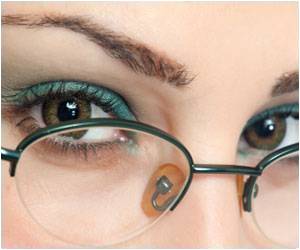In-home occupational therapy reduces depression in people at higher risk for the disorder because of seriously impaired vision.

‘Low-vision patients who improve in their day-to-day functions through at-home training with an occupational therapist have less severe symptoms of depression.’





The new study, described in Investigative Ophthalmology & Visual Science, used measures obtained from the previous Low Vision Depression Prevention Trial in Age-Related Macular Degeneration (VITAL) study to conclude that low-vision patients who improve in their day-to-day functions, such as cooking, reading mail or using a computer, through at-home training with an occupational therapist have less severe symptoms of depression than similar patients who did not train with an occupational therapist.
"Our goal for this study was to see if occupational therapy was a better investment than supportive therapy in preventing depression in low-vision patients," says Ashley Deemer, instructor of ophthalmology at the Johns Hopkins University School of Medicine.
The study was based on information originally gathered for the VITAL study at Thomas Jefferson University in Philadelphia and included data on 188 patients with age-related macular degeneration. The patients' average age was 84, and 70.2 percent of the patients were women. The patients had an average visual acuity of 20/96, meaning that the average person in this study could see an object 20 feet away, while someone with normal vision could see the same object at 96 feet.
All patients also reported borderline depressive symptoms, scoring greater than five on the Patient Health Questionnaire-9, a clinical survey used to estimate depression risk. In this survey, a score of zero is an indication that the patient has no depression or is at a low risk, and a score of 20 or higher marks a patient as at risk for severe depression.
After enrollment in the study, all patients visited a low vision rehabilitation optometrist and filled out a questionnaire designed to assess the importance and difficulty of daily activities, such as cooking, driving, pleasure reading and using a computer.
Advertisement
"For example, if a patient had difficulty reading his or her mail, the therapist would use a magnification device to train and practice with the patient until he or she could successfully read the mail," says Deemer.
Advertisement
Four months after treatment, the researchers followed up with the patients in the study. Before treatment, the occupational therapy group's average PHQ-9 score was 5.5, and the supportive therapy group's average score was 5.6, placing both groups at the borderline of having a depressive disorder. After re-administering the questionnaire after treatment, the researchers found that the occupational therapy patient group's average score decreased to 4.62 and the supportive therapy's score decreased to 4.54.
At this follow-up, the researchers found that 26% of the supportive therapy patients reported that their depression symptoms worsened, while only 12% of the occupational therapy patients reported worsening symptoms. In total, these data show that while both forms of therapy decreased depression in patients, the group that received occupational therapy reduced its risk of depression by much more.
Comprehensive low vision rehabilitative services typically incorporate specialized care from an optometrist and other rehabilitation therapists, including occupational therapists. Because the VITAL study was not originally designed to distinguish the differences among these particular low-vision rehabilitation services, Deemer says one limitation of her findings is the researchers were unable to measure visual function improvements from occupational therapy services alone. Rather, the effects on visual function seen here are the result of comprehensive low vision rehabilitative care, including services given by both the optometrist and the occupational therapist.
Deemer says the costs associated with occupational therapy are often covered by Medicare, but such services appear to be underutilized.
"Many caregivers and patients may not realize how prevalent depression is among people with low vision, and our duty as health care providers is to raise awareness of the problem and the availability of help," says Deemer. "It is good practice not only to refer low vision patients to a mental health expert, but to also suggest low vision rehabilitation and occupational therapy, which could have a huge impact on our patients' lives."
Source-Eurekalert















